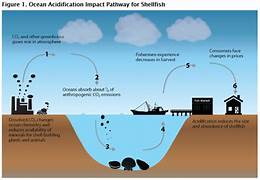How Does Climate Change Influence the Seasons and Agricultural Cycles?
Climate change is reshaping natural systems globally, influencing everything from weather patterns to ecosystems. One of its most profound effects is on the Earth’s seasons and agricultural cycles. As temperatures rise, precipitation patterns shift, and extreme weather events become more frequent, the rhythm of the natural world is disrupted. These changes have far-reaching implications for agriculture, food security, and the livelihoods of millions of farmers worldwide.
In this article, we will explore how climate change is altering the seasons, its impact on agricultural cycles, and the strategies needed to adapt to these challenges.
Understanding Seasonal Changes and Climate Dynamics
Seasons are determined by the tilt of the Earth’s axis and its orbit around the sun. They regulate temperature, rainfall, and the growth cycles of plants. However, climate change is disrupting these patterns in several ways:
- Shift in Seasonal Timings:
- Warmer global temperatures are causing earlier springs and delayed winters in many regions.
- Plants and animals are adjusting their life cycles to these changes, but not all species can adapt at the same rate, leading to ecological imbalances.
- Increased Variability:
- Climate change is amplifying seasonal variability, leading to unpredictable weather patterns. For example, spring may bring unexpected frosts or summer could have prolonged heatwaves, both of which disrupt normal cycles.
- Changing Precipitation Patterns:
- Some regions are experiencing heavier rainfall and flooding, while others face prolonged droughts. This alters water availability, a critical factor for agriculture.
Climate Change and Agricultural Cycles
Agricultural cycles depend on predictable seasonal patterns. Climate change disrupts these cycles in the following ways:
1. Growing Season Shifts
- Lengthened Growing Seasons: Warmer temperatures in temperate regions can extend growing seasons, potentially allowing farmers to cultivate new crops or have multiple harvests. However, this also increases water demand and pest risks.
- Shortened Growing Seasons: In regions experiencing heat stress or water scarcity, growing seasons may shrink, reducing crop yields.
2. Temperature Extremes
- High temperatures can reduce crop productivity by impairing photosynthesis and accelerating water loss.
- Heatwaves during critical growth stages, such as flowering or grain-filling, can lead to poor harvests, particularly for crops like wheat, corn, and rice.
3. Water Stress
- Changing rainfall patterns affect water availability for irrigation. In some areas, decreasing rainfall and shrinking water resources are making agriculture increasingly challenging.
- Overreliance on groundwater for irrigation is exacerbating the depletion of aquifers.
4. Pest and Disease Proliferation
- Warmer temperatures and longer growing seasons allow pests and diseases to thrive, spreading to new regions and intensifying their impact on crops.
- For instance, tropical pests are now found in temperate zones, affecting previously unaffected crops.
5. Impact on Pollinators
- Many crops depend on pollinators like bees, whose life cycles are closely tied to seasonal cues. Climate-induced mismatches between crop flowering and pollinator activity can reduce crop yields.
6. Soil Degradation
- Intense rainfall and flooding can erode topsoil, while droughts can degrade soil structure. Both effects reduce soil fertility and agricultural productivity.
Regional Impacts on Agriculture
1. Tropical Regions
- In tropical areas, rising temperatures often exceed the optimal range for many staple crops, such as maize and rice. This reduces yields and increases the risk of crop failures.
- Heavy rainfall events lead to flooding, which damages crops and disrupts planting schedules.
2. Temperate Regions
- In temperate climates, warming trends may initially seem beneficial, with longer growing seasons and the potential for new crop varieties. However, extreme weather events like heatwaves and unpredictable frosts offset these benefits.
- Diseases and pests from warmer regions are increasingly affecting temperate agriculture.
3. Arid and Semi-Arid Regions
- These regions are particularly vulnerable to water scarcity. Prolonged droughts, reduced rainfall, and increasing evaporation rates make farming unsustainable in many areas.
- Crops like millet and sorghum, which are drought-resistant, are becoming more important, but their yields are still limited by poor soil conditions.
4. Polar and High-Altitude Regions
- Warming in polar regions is opening up new possibilities for agriculture, but the thawing of permafrost releases greenhouse gases, exacerbating climate change.
- High-altitude areas are experiencing similar shifts, with traditional crops giving way to new varieties better suited to warmer conditions.
Case Studies of Agricultural Disruption
- California’s Central Valley:
- Known as the “food basket” of the United States, this region is facing severe water shortages due to prolonged droughts. Key crops like almonds, which require significant water resources, are becoming increasingly unsustainable.
- India’s Monsoon-Dependent Agriculture:
- The timing and intensity of monsoon rains have become unpredictable, leading to crop losses and farmer distress. Rice and wheat yields are particularly affected.
- Africa’s Sahel Region:
- Rising temperatures and erratic rainfall threaten subsistence farming. Efforts to promote drought-resistant crops are underway, but poverty and limited resources make adaptation challenging.
Adapting to Climate-Induced Challenges
To address the impacts of climate change on agriculture, a combination of technological, policy, and community-based solutions is essential:
1. Climate-Resilient Crops
- Developing and adopting drought-tolerant, heat-resistant, and pest-resistant crop varieties can help farmers adapt to changing conditions.
2. Improved Irrigation Techniques
- Efficient irrigation systems, such as drip irrigation, can reduce water wastage and help farmers cope with water scarcity.
- Rainwater harvesting and better water storage infrastructure are critical in drought-prone areas.
3. Agroecological Practices
- Practices like crop rotation, intercropping, and agroforestry can enhance soil health and resilience to climate stress.
- Organic farming reduces dependence on chemical inputs, which can exacerbate soil degradation and water pollution.
4. Digital Tools and Early Warning Systems
- Climate and weather prediction technologies can help farmers plan their activities better, reducing the risks of crop failures.
- Mobile apps and platforms provide real-time information on weather, pests, and market trends.
5. Policy and Financial Support
- Governments need to invest in agricultural research, provide subsidies for climate-resilient technologies, and offer insurance schemes to protect farmers from climate risks.
- International cooperation is crucial to share resources, knowledge, and technology.
6. Education and Community Engagement
- Educating farmers about sustainable practices and the impacts of climate change empowers them to adapt effectively.
- Community-based solutions, such as cooperative farming and shared irrigation systems, build resilience at the local level.
The Broader Implications of Climate Change on Agriculture
The impacts of climate change on agriculture go beyond the farm. They affect food security, global trade, and economic stability:
- Food Security:
- Reduced agricultural productivity threatens food availability and affordability, particularly in vulnerable regions.
- Malnutrition and hunger are expected to rise as food prices increase.
- Global Trade:
- Climate-induced crop failures disrupt global food supply chains, leading to price volatility and trade imbalances.
- Export-dependent economies face significant risks as traditional crops become less viable.
- Social and Political Stability:
- The loss of livelihoods in rural areas can lead to migration and urbanization, straining city infrastructures.
- Food shortages and price hikes can trigger social unrest and conflicts.
Conclusion
Climate change is profoundly altering the seasons and agricultural cycles, posing significant challenges for farmers, ecosystems, and global food systems. While these changes are daunting, they also present opportunities for innovation and adaptation. By investing in sustainable practices, climate-resilient technologies, and supportive policies, humanity can mitigate the impacts of climate change on agriculture and build a more resilient food system.
The urgency of addressing these challenges cannot be overstated. The future of agriculture—and the well-being of billions of people—depends on our ability to adapt to a rapidly changing climate.


